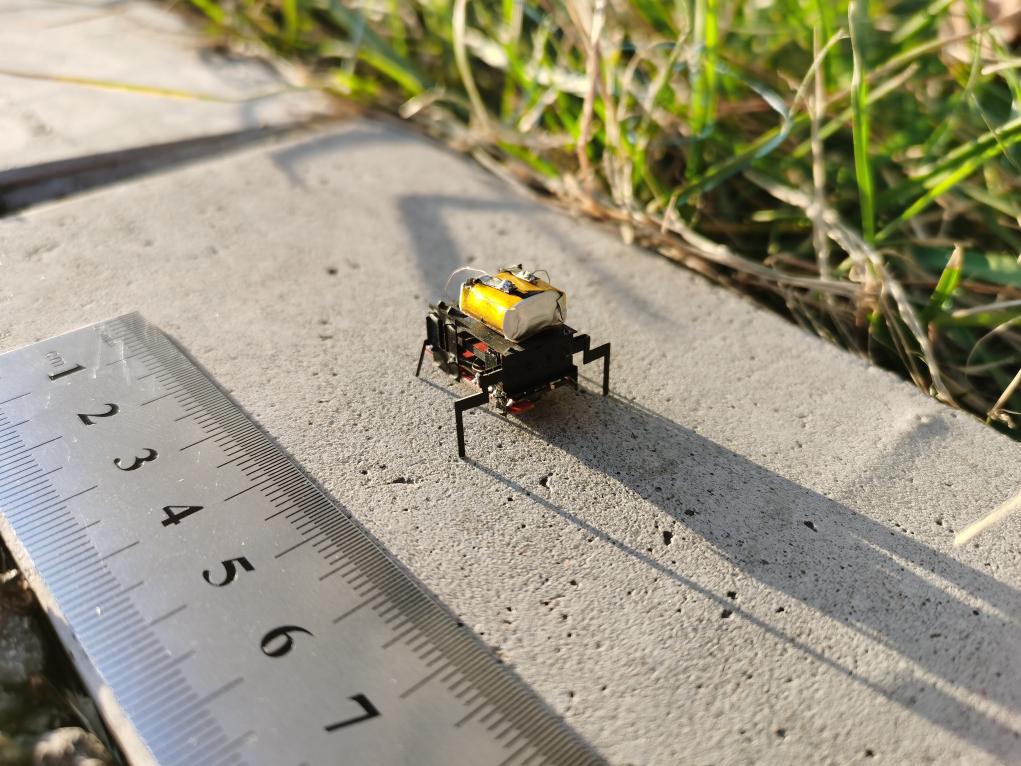Tiny Robotic Insects with Great Power

The BHMbot has a length of two centimeters. (PHOTO: Beihang University)
By Staff Reporters
Under a pile of small stones, a four-legged "insect" moves like a real beetle. It is a microrobot "insect" only two centimeters long, one centimeter wide, and weighing 1.76 grams. Its vertical projection area is no larger than two nails.
The microrobot is called BHMbot, named after its developer Beihang University in Beijing. It can move fast and freely, carry heavy loads, and has wireless control.
Traditionally, robots are driven by electric motors, which require a lot of energy. The internal space of usual microrobots is insufficient to accommodate large-capacity batteries, requiring continuous power supply through external wires, which limits their free movement. After years of research, the team developed a new power system based on linear drive and flexible hinge transmission, eliminating the need for motors and external wires.
The robotic insect is equipped with energy, control, communication, and sensing systems. The linear drive converts the electrical energy from the small battery inside into mechanical energy and outputs mechanical vibration. The flexible hinge transmission mechanism converts the mechanical vibration into periodic vibrations in the legs of the robot, achieving a high-frequency bouncing movement.
The team also designed a bionic running gait, enabling the BHMbot to crawl quickly under high loads through adaptive adjustment of its step frequency and stride length.
The BHMbot can assist in post-disaster search and rescue, as well as detection of damage to large mechanical equipment and infrastructure.






